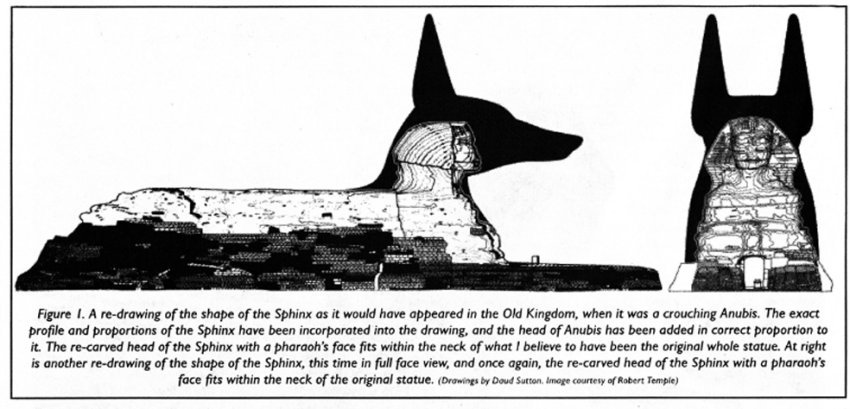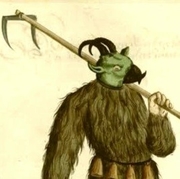|
Real hurthling! posted:the word barbarians, from greek barbaroi, is literally exactly the same kind of insult as if we called chinese people "ching chong" today. this is hilarious
|
|
|
|

|
| # ? May 6, 2024 14:15 |
|
It's funny because I knew the word's origin, but never thought about it that way.
|
|
|
|
Hentai Jihadist posted:dong zhou is the least of it. i dont know a whole lot about china but from what i've looked into it medicinal cannibalism and cannibalism as a "gently caress you" seem fairly common in chinese history even into the modern period My pleurisy is acting up, pass me the mummia
|
|
|
|
Aristophanes: hilarious on the page, brain-melting when the actors have strap-ons.
|
|
|
|
frankenfreak posted:Yeah, one thing I've come to appreciate about history is that despite all the changes humanity has gone through, at the end of the day, we're still the same deep down and just want to eat, sleep and gently caress. I love how some of artwork was so risque they kept it roped off from the public. http://www.pompeiana.org/Resources/Ancient/Graffiti%20from%20Pompeii.htm I.2.20 (Bar/Brothel of Innulus and Papilio); 3932: Weep, you girls. My penis has given you up. Now it penetrates men’s behinds. Goodbye, wondrous femininity! Herculaneum (bar/inn joined to the maritime baths); 10675: Two friends were here. While they were, they had bad service in every way from a guy named Epaphroditus. They threw him out and spent 105 and half sestertii most agreeably on whores. VII.2.18 (vicolo del Panattiere, House of the Vibii, Merchants); 3117: Atimetus got me pregnant
|
|
|
|
animist posted:precolombian america was super cool and 1491 is a good book 1493 is a great followup that explores cool stuff like afro-indigenous american (maroon) communities and the war over bird poo poo island Dreylad has issued a correction as of 00:16 on Aug 19, 2019 |
|
|
|
II.2.1 (Bar of Astylus and Pardalus); 8408: Lovers are like bees in that they live a honeyed life II.2.3 (Bar of Athictus; right of the door); 8442: I screwed the barmaid
|
|
|
|
twoday posted:Anyone have some cool ancient deities to share? Reincarnated https://www.youtube.com/watch?v=ZJpjZxYL28A
|
|
|
|
twoday posted:
So, let's figure out what's going on with that wax covered in Greek letters at the shipwreck. The idea of a Greek ship being shipwrecked on Mauritius in the 16th century is insane. Before the Suez canal was constructed in 1869 and allowed ships to travel from the Mediterranean to the Red Sea, the only route from Greece to Mauritius would have been across the entire Med, around the western and southern shores of Africa. Such a voyage would not have been pretty much impossible for anyone except the maritime empires of Europe at the time, and even then these voyages were only possible with massive amounts of financial support and state-level planning. Shipwrecks don't linger on a beach for thousands of years, so that wreck could not have been ancient Greek, and the 16th century Greeks didn't really have the resources to do this sort of thing. Who did?  Map and Timeline of Portuguese Discoveries (Yes, the Portuguese did indeed discover America before Columbus, but that's a story for another time) Mauritius was not discovered by the Dutch. It was discovered by the Portuguese almost a century earlier in 1507 when they sent a fleet out towards Asia, and one of the ships got blown off course and ended up there by accident. They struggled to make it back to Europe and most of the crew died of starvation along the way, with a crew of only 6 left alive by the time they managed to sail to Senegal. Because Senegal was a frequent stopping point for Portuguese ships they were eventually found and brought back to Portugal, where they shared news of their discovery. Over the course of the next several years some other Portuguese explorers stopped by Mauritius on their way to Asia, but they saw little value in these islands and made no claim to them, preferring to seek out the riches of spice and other wares further east. However, it is notable that one of the Portuguese names for Mauritius was Cignes meaning Swan, or the land of the Swan. If you will recall, the Dutch compared the Dodos to swans. As far as I know, nobody else from Europe besides the Portuguese was there before the Dutch. So, could the Dutch sailors have mistaken some Portuguese writing for Greek? lol, no, they wrote in the same alphabet and there was almost certainly someone in the Dutch crew who would have been able to read it. They were on the island for five months, they had the time. This suggests that it was a script unfamiliar to the sailors, which reminded them of Greek. Now, if you were a 16th century sailor from Northern Europe, probably barely literate in his own language, who had maybe seen the Greek alphabet once or twice, wouldn't it be easy to confuse the following two things?   "It's all Greek to me!"  Alright, so this makes much more sense. By this time the Arabs had been engaged in maritime trade with India, China, Indonesia, and the entire eastern coast of Africa for centuries, as far as Madagascar, and had likely even known of the Seychelles, which weren't too far from Mauritius. It's highly plausible that they got blown off course and crashed into Mauritius, which is known to be surrounded by dangerous winds and currents. So what was the 300 pounds of wax with "Greek" (Arabic) letters on it? Perhaps like me, the first place your mind wandered to was wax tablets used for writing, or even clay tablets. This doesn't make sense. Why would a trade ship be carrying 300 pounds of writing, one of the heaviest forms of writing, on a ship, where weight is a limiting factor? This wouldn't have been a valuable trade good anyway, why bother? Also everyone was writing in books by then anyway So what were the Arabs trading at that time? Since antiquity the Arabs had grown rich off the trade of incense, primarily frankincense and myrrh, which was highly valuable, and which they traded with everyone between Madagascar and China. Here's what those two things look like:  Frankincense  Myrrh These things were traded across Asia and Africa, but because they came from Arabia they were much more rare in Northern Europe, and not a common trade good there. So if you didn't know what this stuff was and you had to describe it, what would you say? Calling it wax would not be far off, you could even describe this sort of resinous gum as wax in modern Dutch and get away with it. So what's the deal with the 300 pounds of wax covered in greek letters at the shipwreck on dodo Island? I'm imagining that it was either crates of incense covered in Arabic writing, or even giant melted down balls of the stuff with Arabic letters stamped into it. (several more posts on this to come, I didn't even get to the ancient part yet) twoday has issued a correction as of 00:51 on Aug 19, 2019 |
|
|
|
animist posted:precolombian america was super cool and 1491 is a good book This is an excellent documentary about the massive and advanced pre-Columbian society that lived in the Amazon which historians have only recently begun to understand the scope of, and I highly reccomend that everyone watch it: https://www.youtube.com/watch?v=0Os-ujelkgw and here is the documentary equivilent of 1491, with more about pre-Columbian society in North America: https://www.youtube.com/watch?v=whP9RL5huhE also, 1493 was a really good book too, and if you liked 1491 you should definitely read 1493
|
|
|
|
pancake rabbit posted:uh look u philistine, minoan what we know now, the sea peoples were just phoenician the job 
|
|
|
|
there were numerous canal projects linking the med and red seas dating back to the ptolemaic period that were in use through roman times and revived later by arabs a greek ship could have gotten to mauritus but certainly not in 1600 as you say. eager to hear the dodo story.
|
|
|
the idea that the Amazon rainforest isn't "natural" and is in fact a gigantic abandoned overgrown garden kinda blows my mind.quote:In 2013, community ecologist Hans ter Steege and colleagues were taking inventory of the vast diversity of the Amazon's trees. The team sampled 1,170 scattered plots far from modern human inhabitants to identify more than 16,000 different species among those 390 billion individual plants. Then they noticed something odd: Despite that broad diversity, over half of the total trees were made up of just over 1 percent (227) of the species. also a substantial part of the forest is growing on a type of super fertile soil that is probably man made.
|
|
|
|
|
there has been an absolutely insane boom in mesoamerican archeology the past few years and I can't wait for the new stuff to filter out of academic writing into something a bit more easy to read
|
|
|
|
uber_stoat posted:the idea that the Amazon rainforest isn't "natural" and is in fact a gigantic abandoned overgrown garden kinda blows my mind. the documentary I just posted is all about this, and identifying the composition of the soil
|
|
|
|
I went down the Graham Hancock rabbit hole a few years back, and bought a couple of his books. I found them very readable and quite convincing, but I've always wondered how easily they could be debunked by actual geologists/archaeologists. His main premise, that we're a species with collective amnesia, makes sense to me. The traditional idea that modern humans have existed for hundreds of thousands of years but, despite our innate intelligence, we spent all that time as simple hunter-gatherers, just seems wrong to me.
|
|
|
BMX Ninja posted:I went down the Graham Hancock rabbit hole a few years back, and bought a couple of his books. I found them very readable and quite convincing, but I've always wondered how easily they could be debunked by actual geologists/archaeologists. I went through a similar period. Graham Hancock, Fortean Times, Art Bell. good poo poo. I don't think Hancock has it right, but it does seem as though every new discovery pushes the earliest human civilizations further and further into the past. no flying saucers from Atlantis, but I do find it plausible that there have been civilizations, now fully forgotten, that were more complex than previously thought possible.
|
|
|
|
|
BMX Ninja posted:I went down the Graham Hancock rabbit hole a few years back, and bought a couple of his books. I found them very readable and quite convincing, but I've always wondered how easily they could be debunked by actual geologists/archaeologists. Graham Hancock is an excellent grifter, because he actually has some good ideas. The thought that there may have been a human civilization before the last Ice Age doesn't seem insane to me, why not? A lot of archaeological evidence is under water, he's right. Let's discuss it, I'm willing to at least hear the arguments. And though it's not him, but someone else in the same vein, I find the idea that the sphinx is actually much older than the pyramids a very interesting and entertaining argument. The idea that a pharaoh came along and modified an even older statue to look like him makes sense to me:  It makes a lot more sense to me than the currently accepted hypothesis, that the ancient Egyptians, with their highly developed artistic style and knowledge of elegant sculpture, decided to build this insanely out-of-proportion stack of poo poo:  The thing is, you can't discuss this without seeming like a lunatic. It's not open to discussion. One reason for this is just the way that academia works, and that once someone makes a big discovery they end up being in charge of their field and shooting down everyone who questions them. It sucks, and though it seems obvious that we know next to nothing about history and that we should constantly be revising, questioning, and updating it, in practice this is almost impossible because of the way the academy is structured. But there is another reason why it's difficult to rewrite history, as it's officially recognized and understood. That reason is the existence of grifter ancient-aliens motherfuckers like Graham Hancock. He had some interesting ideas, but ended up being discredited by an overly conservative academic world for being too skeptical. That hasn't stopped him from being one of the most widely known "fringe historians" on the planet. The way he managed to do that was by taking his actual knowledge and interesting ideas, and mixing them together with a bunch of insane bullshit that appeals to lunatics and sells books. For instance, he wrote a book called "America Before," about ancient America, trying to tie it into his theories about a pre-ice age civilization and such. Ok, fine, let's have this discussion, why not, I think it's a valid thing to consider if he has decent arguments. We should be talking more about ancient america, let's do it! But then at the end of the book he veers off into discussion about how the ancient mounds of the Americas were built by moving stones telepathically, and other insane bullshit that he included just to sell this book to the crystal crowd. He says it all in the same cadence, as if there is no distinction between a good theory and sci-fi fantasy poo poo, and because of that nobody takes anything he says seriously. Not a single bit of it. And that's sad, because sometimes he poses half-decent reasons for questioning the status quo in history, which sorely needs to happen. But then he turns around and discredits all those ideas in the same breath, contributing to the ancient aliens movement with all the other grifters, making a quick buck if he can, seeking to promote his pet theories instead of looking for the truth. In this way he works to discredit everyone else who questions our current understanding of history, and helps ensure that we as culture will continue to fail at revising our understanding of the past. So gently caress Graham Hancock. twoday has issued a correction as of 01:31 on Aug 19, 2019 |
|
|
|
when you consider the development of the modern diet, the domestication of corn and potatoes might be some of humanity's greatest achievements
|
|
|
|
pre-columbian agriculture in the americas has totally reshaped the diet of the world lmao, turnip. yeah, thanks even chili peppers were allegedly limited to the Americas before Columbus* * not true
|
|
|
|
i should do an effortpost about the incans. not an expert, just a big Fan.
|
|
|
|
Recommended reading: Michael Parenti: The Assassination of Julius Caesar: A People's History of Ancient Rome Publisher's Weekly writes, "Parenti... narrates a provocative history of the late republic in Rome (100–33 B.C.) to demonstrate that Caesar's death was the culmination of growing class conflict, economic disparity and political corruption." Kirkus Reviews wrote: "Populist historian Parenti... views ancient Rome’s most famous assassination not as a tyrannicide but as a sanguinary scene in the never-ending drama of class warfare." Recommended viewing: https://www.youtube.com/watch?v=rwzwu1ORC_c Michael Parenti on C-SPAN promoting The Assassination of Julius Caesar, 2003
|
|
|
|
Were almost ceetainly limited, we have no good evidnce that they existed anywhere else and positing trans-oceanic voyages with such limited evidence is a bit dicey. They didn't even exist in the Hohokam or Chaco cultures, which had extensive contact with chili using Mesoamerican civilizations. Even accounting for issues of preservation, the distribution of known cultivars and artistic representations prior to the Spanish invasions suggests they went no further than the Carribbean prior for the late 1490s and for some reason, never into North America. Direct contact between what is now the US Southwest and the Shaft Tomb/Purépecha cultures, and possibly the Maya and Teotihuacan as well is an interesting topic. It's not even argued against in non-quack circles anymore as the physical evidence is overwhelming. Copper bells chemically sourced to West México are found across the region, with major concentrations in Hohokam sites like Snaketown, AZ U:9:1 (ASM) and Gatlin, and at Chaco Regional System Great Houses, notably Pueblo Bonito. After CE 1250 they were heavily concentrated at Paquimé, the largest site and likely only city of the Casas Grandes culture of Chihuahua, Sonora and extreme Southwest New Mexico/Southeast Arizona. There are also the macaws, include scarlet and military macaws, which were bred at Paquimé, but prior to CE 1250 were not bred in the region. Wupatki, a village and trading center near modern Flagstaff, Arizona, had a large amount, more than even Chaco Canyon as a whole. In lesser amounts you find mosaic pyrite mirrors, pseudo-cloisonné and very rare import ceramics. Also cacao at Chaco Canyon, and seemingly no where else, drank from vessels produced near modern Zuni, imported to Chaco Canyon and identical in form to Maya cacao cups. Then there are the cultural imports, such as the ballcourts and ballgame practiced by the Hohokam, as well as Hohokam courtyard group and plaza site plans, and the Classic Period platform mounds (adopted from the pyramids and small platform shrines of Mesoamerica). Mesoamerican-style collonades are found at Chaco Canyon and Paquimé as well. And lots of shared iconography, including local Goggle-Eyed figures and Feathered and Horned Serpents. Hohokam people also make shell jewelry very similar to West Mexican examples. Even the adobe houses of the Classic Period Hohokam have some similarity to Mesoamerican examples. Ceramics may also have diffused north with beans, though not directly from Mesoamerica, and maize and squash did the same earlier. Moving north to south, you see less going to Mesoamerica, but there is a known Middle Sacaton 1 Red-on-Buff jar (CE 1030-1080) from near La Quemada on the northern edge of Mesoamerica (which has a deified ancestor and mortuary practice of charnel rooms that slowly creeps north with some alterations and is found at Paquimé in a modified form about 300 years later) and there are rare, rare finds of New Mexico turquoise in Mesoamerican sites. So clearly there was big, giant interaction sphere and cultural world that extended from what is now the area around the San Juan Mountains in Colorado on the north, all the way south to Yucatan, and from the Pacific Coast to the start of the Southern Plains. There has been tendencies in the past to put a driving emphasis on one culture or another, but it more seems to be interaction, not domination and sharing of ideas over a broad area.
|
|
|
|
Dreylad posted:when you consider the development of the modern diet, the domestication of corn and potatoes might be some of humanity's greatest achievements 
|
|
|
|
Hilario Baldness posted:Recommended reading: yeah caesar is an amazing figure to study, especially in his own words. translations dont really do justice to how bizarre his latin is, its not especially challenging but he shifts from really twisted and strange phrasings/word orders you dont see anywhere else when describing other people, places etc but snaps into the clearest and most concise textbook example sentences when talking about himself and his decisions. it creates this image of him being the only competent person on earth. his words are hyper propaganda, bravado, and intellectual posturing as he sought to create and manage the narrative of his actions to society in a very savvy modern way that resonates in this age of trump 6 am toilet tweets. only caesar was competent and also really preoccupied with appearing magnanimous when dealing with political enemies. he is always going on long tangents about how he is sparing everybody he defeats including the guys that killed him years later. tldr: caesar was a larger than life populist figure attempting to speak directly to his supporter from the frontlines through a decade of war and extreme social crisis. he was genocidal, egomaniacal, and power hungry but drat if he didnt score many big owns on a bunch of other elites at least nominally on behalf of the people. i want to go back and fill in so much class conflict context in this post from the 130s bce through the 40s but its late and i'm phone typing so i wont since its probably all in the links you give in you post anyway but talking about and reading caesar is a big part of my teaching so i get all into it and carried away.
|
|
|
|
KiteAuraan posted:Were almost ceetainly limited, we have no good evidnce that they existed anywhere else and positing trans-oceanic voyages with such limited evidence is a bit dicey. They didn't even exist in the Hohokam or Chaco cultures, which had extensive contact with chili using Mesoamerican civilizations. Even accounting for issues of preservation, the distribution of known cultivars and artistic representations prior to the Spanish invasions suggests they went no further than the Carribbean prior for the late 1490s and for some reason, never into North America. speaking of macaws did you know the inca used to pluck them and rub their skin with frog toxins to stimulate the growth of unnaturally colored feathers? wild stuff
|
|
|
|
twoday posted:pre-columbian agriculture in the americas has totally reshaped the diet of the world Forgot: syphilis --> Old World
|
|
|
|
Christoph posted:Forgot: they found a pre columbian european skeleton that exhibited signs of it or so i thought i read a few years ago but i dont know what the consensus was about if that was true or not
|
|
|
|
bigly recommending michael hudson's ...and forgive them their debts for a history of debt and finance in the places that seem to have invented it, the ancient kingdoms of bronze age mesopotamia. also some sections on biblical jews and the later eastern roman empire. i believe david graeber's debt: the first 5,000 years draws heavily on hudson's historical research.
|
|
|
|
twoday posted:Anyone have some cool ancient deities to share? I like Janus. He's a dual-faced Roman god - specifically Roman, he has no Greek counterpart - of beginnings and... transition? Movement? Doorways? The heavens? Time? He's definitely the god of beginnings, and because of that also endings, but this broad concept has him involved in everything from war efforts to entranceways. He had a ritual gateway that was symbolically opened at the outset of wars, he was involved in omens and prophecies, travel of all kinds, controlled seasons and the concept of time itself as his faces allowed him to see both the future and the past with clarity. His image was etched into doorways and stamped into coins. Yet despite his prominence in Ancient Rome, he seems to be kind of obscure (at least to a general audience) which I think is because he has no Greek equivalent with their associated melodramatic and scandalous traditions. Even within his own pantheon he's a somewhat undefined overpowered weirdo that, poetically enough, seems like an echo of something earlier. Here's a statue of him and Bellona, the war goddess. 
|
|
|
|
the doors were only closed 3 times
|
|
|
|
Real hurthling! posted:speaking of macaws did you know the inca used to pluck them and rub their skin with frog toxins to stimulate the growth of unnaturally colored feathers? wild stuff Tawantinsuyu was a fascinating place, their economy is incredibly interesting. But I never knew they did that with macaws. What little I read of them focused on ceramic design styles and metallurgy, since those are two of my research interests. Macaws in the US Southwest are fascinating as well, they appear first in large numbers at Pueblo Bonito in Chaco Canyon, tied to the emergence of the chiefdom (I feel it's a religious specialist run state that is very weak, but a state none the less). Watson et al. (2015) found some good evidence that they show up right at the start of Pueblo II (CE 900-975) rather than the peak of the Chaco state in Late Pueblo II (the Classic Bonito Phase of the Chaco Regional System, around CE 1040/1050) and based on earlier developments in Pueblo I in the Mesa Verde region (I've worked at one of these sites, and they are many), it seems to be related to an emergent elite seeking symbols of power. This contrasts with the Mimbres, who seem to use them in more egalitarian rituals, and the Hohokam who never really have many macaws at all, despite being the closest to the sources. I could go on and on about what seems to be a populist revolt in Pueblo III, the emergence of modern Pueblo ideas, Chaco state terrorism and how it all led to the collapse of the state, but it doesn't really tie into the macaws. What is interesting about the early macaws is that recent genetic work by George et al. (2018) suggests that there was trade south, but also an early breeding center, earlier and further north than Paquimé. My guess would be somewhere in the Mimbres region. They depict what may be macaw husbandry and breeding on Mimbres Classic Style III bowls (CE 1000-1130) and also the Mimbres people have cultural and seeming genetic ties to the later occupants of Paquimé. So it makes some sense that Mimbres people may have been the early breeders. Another likely possibility is that it was actually south of Paquimé, in an incredibly poorly understood region between the edge of the "Southwestern" cultures and Mesoamerica. It is sometimes called the Gran Chichimeca and to this day has had almost no work done on it. References Watson et al. 2015 https://www.pnas.org/content/112/27/8238 George et al. 2018 https://www.pnas.org/content/115/35/8740
|
|
|
|
KiteAuraan posted:Were almost ceetainly limited, we have no good evidnce that they existed anywhere else and positing trans- I’m not positing any trans-oceanic journey, I think it could have been growing in Eurasia or Africa too. quote:In the publication Svensk Botanisk Tidskrift (1995), Professor Hakon Hjelmqvist published an article on pre-Columbian chili peppers in Europe. In an archaeological dig in the block of St. Botulf in Lund, archaeologists claimed to have found a Capsicum frutescens in a layer dating to the 13th century. Hjelmqvist also claims that Capsicum was described by the Greek Therophrasteus (370-286 BC). He also mentions other antique sources. The Roman poet Martialis (around the 1st century) described "Pipervee crudum" (raw pepper) to be long and containing seeds. The description of the plants does not fit pepper (Piper nigrum), which does not grow well in European climates. The article is here. There is a summary in English at the end (page 199-200) twoday has issued a correction as of 13:06 on Aug 19, 2019 |
|
|
|
Real hurthling! posted:speaking of macaws did you know the inca used to pluck them and rub their skin with frog toxins to stimulate the growth of unnaturally colored feathers? wild stuff Those birds are available, and those frogs are available, so do people still do that? I'd expect to have seen a picture floating around by now
|
|
|
|
uber_stoat posted:the idea that the Amazon rainforest isn't "natural" and is in fact a gigantic abandoned overgrown garden kinda blows my mind. If that hypothesis is true then humans peaked early
|
|
|
|
Hilario Baldness posted:Recommended reading: i really liked it parenti is a really readable writer 9/10 fully recommend
|
|
|
|
i'm a sucker for the Andy McDermott books, anyone else read em? he's a goon too. The Excalibur one had a great finale, but I think Atlantis is still his best
|
|
|
|
Real hurthling! posted:the doors were only closed 3 times Numa boasted that the doors of the temple were never opened once during his reign.
|
|
|
|
twoday posted:I’m not positing any trans-oceanic journey, I think it could have been growing in Eurasia or Africa too. This reminds me of the Cocaine Mummies https://www.youtube.com/watch?v=57gaB1VtJiQ They were testing some mummies and found cocaine and nicotine on them. At first they thought it was contamination, so they did further tests, like washing the hair in an acid so they could test inside the hair, and they still found nicotine, indicating that the mummy had been smoking while alive. People jump to the conclusion that the Pharoahs must have had access to trade with South America, but that seems unlikely. The cocaine can be explained because it exists in trace amounts in certain types of cedar which were used in the embalming process, and nicotine is not exclusively found in America either. Cousins of the tobacco plant in the Nicotiana genus also grow in Africa, and other plants known to the Egyptians such as celery and ashwagahnda also contain nicotine.
|
|
|
|

|
| # ? May 6, 2024 14:15 |
|
Hilario Baldness posted:Recommended reading: big dong wanter posted:i really liked it It's very readable and he makes some good analysis especially of "gentlemen's history" and how class interests have informed historical narratives, and he's a good polemicist. Not a great historian himself though - he's got a habit of presenting things as historical fact when the only sources for them are 100% certain inventions, sometimes centuries later. One example is how he takes Tacitus' description of the invasion of Britain and the famous quote "they make a desert and call it peace", and presents this as something an enemy of Rome actually said, rather than something Tacitus made up as a rhetorical device to beat his political opponents with in internal Roman politics. It's unclear if Parenti just doesn't realise this or is deliberately omitting the context; but both things are approaches he criticises other historians for in the book. There are other passages where he criticises some sources' accounts of Caesar's behaviour because they were writing at a remove of decades, then counters them with something that's only attested in a text 200 years after Caesar's death - but in that case, since it agrees with what he's saying, he doesn't bring up its remove and dubious historicity. It just made me wish that Parenti put more care into this because his arguments are otherwise very good and convincing, and I did come away from the book thinking that he was right about the reasons Caesar was vilified at the time and in subsequent years for his power grab by the 'gentleman historians'. But the flaws make me wary about recommending it as a whole. edit: although thinking about it, it's pretty much worthwhile for the chapter where he just excoriates 19th and 20th century historians at length for being slavery apologists. so sure, give it a read John Charity Spring has issued a correction as of 17:10 on Aug 19, 2019 |
|
|












































